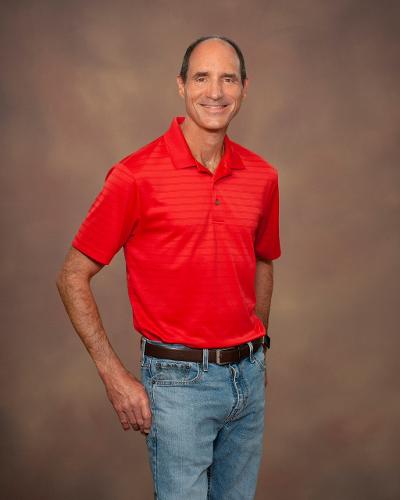by Mike Thomas, NBHWC June 6, 2024
As a health coach, I often work with busy professionals who struggle with low energy, high stress, and chronic pain. Most of my clients are middle-aged women who juggle demanding jobs and responsibilities at home, often prioritizing everyone else’s needs over their own. It’s no surprise that they feel exhausted and find it challenging to start making changes toward a healthier lifestyle. Sound familiar?

One of the most effective strategies I’ve found to help my clients make initial progress on their wellness journey is to shift their focus from short-term discomfort to long-term goals and joy. This mindset not only helps them get started but also builds confidence as they see progress. Here’s how this approach works and some examples to illustrate its impact.

Creating a Wellness Vision Statement
To introduce the idea of long-term goals, I start by asking my clients to create a wellness vision statement. This statement is a clear picture of their healthiest self in the future. It’s a powerful tool that inspires and motivates them. For example, let’s say I had a client named Beth who had trouble getting started on her wellness journey. We talked about her vision, and she decided to read it every day. This simple habit gave her the spark she needed to get motivated and start making changes.
Understanding Short-Term Discomfort
Starting a wellness journey often involves overcoming short-term discomforts. For many of my clients, just feeling too tired or getting distracted by the chaos in their lives can be significant barriers. For instance, the thought of walking for 20 minutes three times a week might seem daunting when you’re already exhausted. It’s important to acknowledge these feelings and understand that they are a natural part of the process.

Small Steps Toward Big Changes
One of the key pieces of advice I give to my clients is to start slow with very small goals. Instead of trying to overhaul their entire lifestyle overnight, they might begin with something as simple as a five-minute walk or replacing one unhealthy snack with a piece of fruit. Beth, for example, started by taking a short walk during her lunch break. This small step was manageable and set the stage for larger changes down the line.

Focusing on What’s Working
We work together to identify what is working well and how we can build on those successes. For example, if Beth found that taking a short walk after dinner helped her feel more energized, we explored ways to incorporate this habit more regularly. It’s essential to learn from these successes and use them as building blocks for further progress.
Learning from Setbacks
Setbacks are a natural part of any journey, and it’s crucial to approach them non-judgmentally. Together, we looked at what went wrong and what could be learned from the experience. This approach helped Beth understand that setbacks are not failures but opportunities to learn and grow. I often remind my clients of the mantra, “Progress, not perfection,” to keep them focused on the bigger picture.

The Pillars of Lifestyle Medicine
Initially in coaching, all of the pillars of lifestyle medicine are up for discussion, but my clients typically focus on two critical pillars of lifestyle medicine: eating a healthier diet and incorporating more movement into their daily life. Most Americans consume a diet that’s high in calories but low in nutrients, which can contribute to low energy and poor health. By making small changes, like adding more vegetables to their meals or choosing whole grains over processed foods, clients can begin to see and feel the benefits.

Similarly, our sedentary lifestyles are taking a toll on our mental, emotional, and physical health. Encouraging clients to move more, even in small ways, can lead to significant improvements. Beth found that her short lunchtime walks not only boosted her energy levels but also improved her mood and productivity at work.
Building Confidence Through Progress
As clients see progress, they start to feel more confident about making lasting changes. Beth, who struggled with tiredness and stress at first, began to notice her energy levels and overall well-being getting better after a few weeks of small, steady changes. She also started sleeping better at night and no longer woke up at 2 AM and tossed and turned until 5 AM. This progress motivated her to keep going and set new, bigger goals.

Focusing on long-term goals and the joy of achieving them, rather than the short-term discomfort of starting, can make a significant difference in a wellness journey. By creating a wellness vision statement, taking small steps, learning from setbacks, and building on successes, my clients can make meaningful progress. As they do, they gain the confidence to continue striving for their healthiest, happiest selves. Remember, it’s about progress, not perfection.
Call to Action
Take 5-10 minutes today to think about and write down what your vision of health looks like for you in the future. This small step can be a spark that ignites your health journey. Imagine your best, healthiest self and let that vision guide you toward lasting wellness.

Mike Thomas is a board certified health coach. He helps busy professionals who struggle with low energy, high stress and chronic pain.
Learn more about Mike
This blog is for educational and informational purposes only and solely as a self-help tool for your own use. I am not providing medical, psychological, or nutrition therapy advice. You should not use this information to diagnose or treat any health problems or illnesses without consulting your own medical practitioner. Always seek the advice of your own medical practitioner and/or mental health provider about your specific health situation. For my full Disclaimer, please go to CoachMikeThomas.com.
